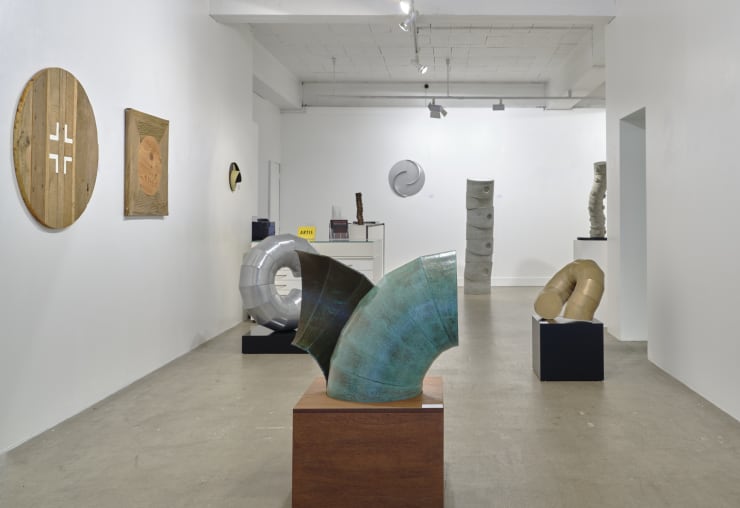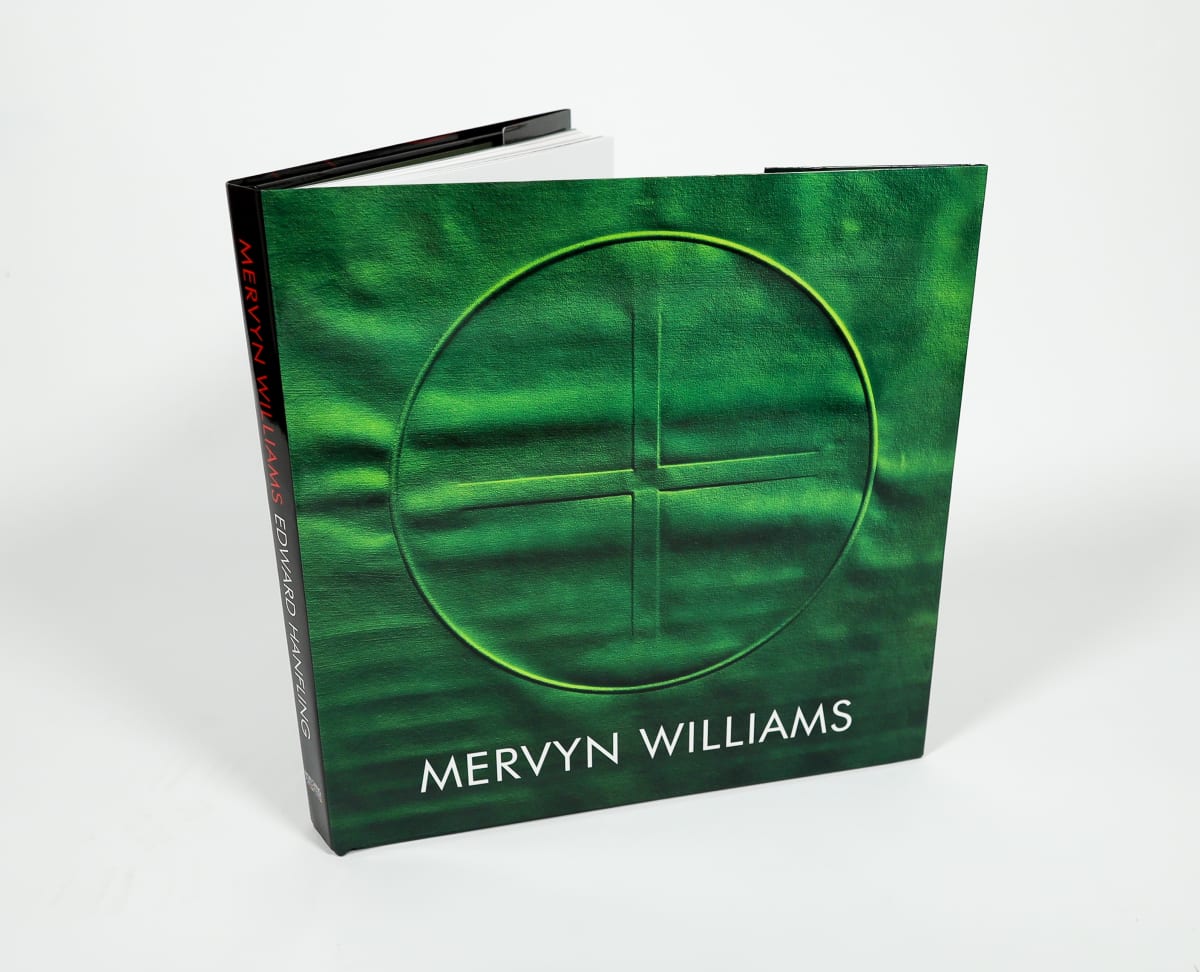Mervyn Williams b. 1940
Although best known as a painter, throughout his distinguished career Mervyn Williams’ artistic practice has also encompassed design, printmaking, and sculpture.
Born in Whakatane, in 1940, Williams now lives and works in Auckland. Williams studied at Elam School of Fine Arts, Auckland from 1957 - 1958 and has exhibited regularly in New Zealand since 1966. He is represented in major public and private collections in New Zealand, the USA, Canada, Europe, the UK, Japan and Australia.
Early in his career, a fascination with Impressionism and Post-Impressionism led Williams to explore the mechanics of visual perception, investigating the illusionary techniques of the Pointillist artists and studying the properties of halftones and direct exposure onto photographic film.
Williams began to investigate, through painting, the immutable nature of photographs, the ability of the image to remain intact through many degrees of enlargement. Using this property as a starting point the artist employs a complex painting process involving many layers of translucent colour to build up a surface so convincing in its rendering of low relief that a perplexed audience is left uncertain of its surface properties to the point at which only the tactile experience of touch will lay the problem to rest. It is an enigmatic quality that dissipates when the artwork itself is photographed and reproduced.
Williams’ paintings are concerned with perception. The intrigue of the illusion in the works cannot be deciphered in reproduction. One must stand in front of the artworks themselves to understand the mastery of paintwork and chiaroscuro that trick the eye into seeing flat surfaces as low relief. When confronted with his painting, the initial assumption is of a textured surface, thick paint built up to form ridges, bubbles, buttons, creases. On closer inspection, the three-dimensional qualities are revealed as intricacies of paintwork which belie the flat surface of the canvas. The moment of uncertainty prompts a distinct desire to touch the painting to affirm its true nature.
Luminosity abounds in Williams’ works. A subtle variation of tone within the monochrome paintings creates the illusion of an ethereal light stemming from an indeterminate source. Some appear to be glowing from within, while others seem to be lit from behind, like silk held up to the sun.
-
 Mervyn WilliamsPolar (Grey), 2013acrylic on canvas91.5 x 91.5 cm
Mervyn WilliamsPolar (Grey), 2013acrylic on canvas91.5 x 91.5 cm -
 Mervyn WilliamsRamrod, 2018Acrylic on canvas91 x 91 cm
Mervyn WilliamsRamrod, 2018Acrylic on canvas91 x 91 cm -
 Mervyn WilliamsAll at Sea, 2017Acrylic on canvas91 x 91 cm
Mervyn WilliamsAll at Sea, 2017Acrylic on canvas91 x 91 cm -
 Mervyn WilliamsCentrefuge, 2013Acrylic on canvas122.5 x 122 cm
Mervyn WilliamsCentrefuge, 2013Acrylic on canvas122.5 x 122 cm -
 Mervyn WilliamsFlare Factor, 2013Mixed media on canvas122 x 122 cm
Mervyn WilliamsFlare Factor, 2013Mixed media on canvas122 x 122 cm -
 Mervyn WilliamsFontana, 2013Mixed media on canvas102 x 102 cm
Mervyn WilliamsFontana, 2013Mixed media on canvas102 x 102 cm -
 Mervyn WilliamsMiriada, 2013Mixed media on canvas122 x 122 cm
Mervyn WilliamsMiriada, 2013Mixed media on canvas122 x 122 cm -
 Mervyn WilliamsParagon Blue, 2013Mixed media on canvas122 x 122 cm
Mervyn WilliamsParagon Blue, 2013Mixed media on canvas122 x 122 cm -
 Mervyn WilliamsWhiplash - Mono, 2013Mixed media on canvas122 x 122 cm
Mervyn WilliamsWhiplash - Mono, 2013Mixed media on canvas122 x 122 cm -
 Mervyn WilliamsSamba (Red), 2012Mixed media on canvas122.5 x 122.5 cm
Mervyn WilliamsSamba (Red), 2012Mixed media on canvas122.5 x 122.5 cm -
 Mervyn WilliamsSpellbound , 2015Aluminium on wooden plinth60 x 59 cm
Mervyn WilliamsSpellbound , 2015Aluminium on wooden plinth60 x 59 cm -
 Mervyn WilliamsRevelation, 2011Acrylic on canvas91 x 91 cm
Mervyn WilliamsRevelation, 2011Acrylic on canvas91 x 91 cm -
 Mervyn WilliamsQuotient, 2008Acrylic on canvas68 x 80 cm
Mervyn WilliamsQuotient, 2008Acrylic on canvas68 x 80 cm -
 Mervyn WilliamsSolitaire, 1999Acrylic on canvas95 x 80 cm
Mervyn WilliamsSolitaire, 1999Acrylic on canvas95 x 80 cm -
 Mervyn WilliamsUnder Capricorn, 1999Acrylic on canvas135 x 148.6 x 3.3 cm
Mervyn WilliamsUnder Capricorn, 1999Acrylic on canvas135 x 148.6 x 3.3 cm
-

SUMMER II
1 - 25 February 2024Read more -

July Selection
11 - 24 July 2023Read more -

Mervyn Williams
Late Harvest 15 September - 5 October 2020Mervyn Williams has established a distinguished career as a painter and printmaker but his practice has sometimes involved sculpture, as his reliefs made in Whanganui from recycled timber demonstrate. Also,...Read more





















